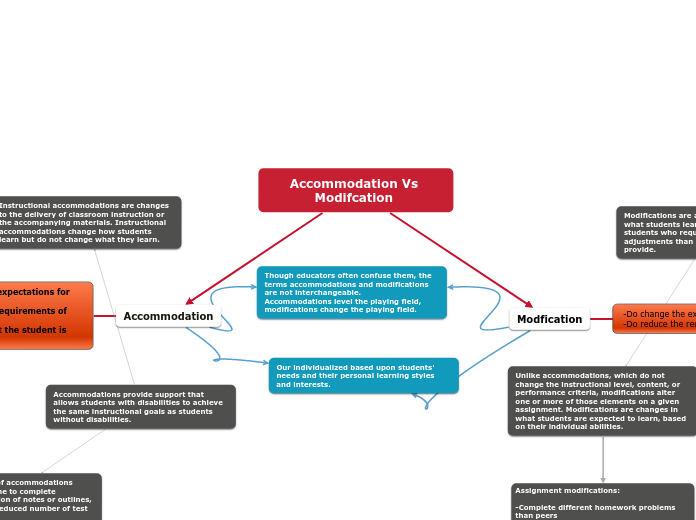Accommodation Vs Modifcation
Modfication
-Do change the expectations for learning
-Do reduce the requirements of the task
Accommodation
-Do not change the expectations for learning
-Do not reduce the requirements of the task
-Do not change what the student is required to learn
Our individualized based upon students' needs and their personal learning styles and interests.
Accommodations provide support that allows students with disabilities to achieve the same instructional goals as students without disabilities.
Instructional accommodations are changes to the delivery of classroom instruction or the accompanying materials. Instructional accommodations change how students learn but do not change what they learn.
Students with disabilities who use instructional accommodations are required to learn the same content at the same level of proficiency as their peers who do not use instructional accommodations.
Common examples of accommodations include extended time to complete assignments, provision of notes or outlines, untimed tests, and reduced number of test questions.
Modifications are adaptations that change what students learn and are used with students who require more support or adjustments than accommodations can provide.
Unlike accommodations, which do not change the instructional level, content, or performance criteria, modifications alter one or more of those elements on a given assignment. Modifications are changes in what students are expected to learn, based on their individual abilities.
Assignment modifications:
-Complete different homework problems than peers
-Answer different test questions
-Create alternate projects or assignments
Curriculum modifications:
-Learn different material (such as continuing to work on multiplication while classmates move on to fractions)
-Get graded or assessed using a different standard than other students
-Be excused from particular projects
